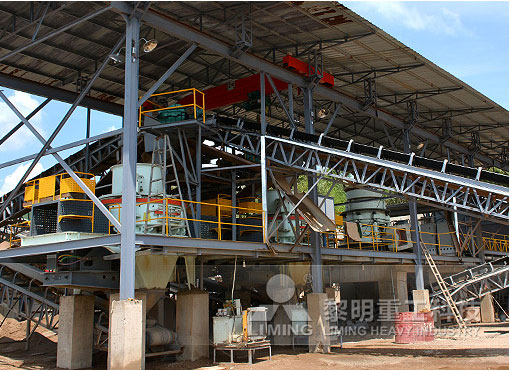Iron ore beneficiation is a multi-stage process that aims to improve the quality of raw iron ore by removing impurities (gangue minerals) and increasing its iron content. The specific flow may vary depending on the ore type (e.g., hematite, magnetite, or goethite) and the desired product grade. Below is a generalized iron ore beneficiation process flow:
—
 1. Crushing & Screening
1. Crushing & Screening
– Primary Crushing: Large chunks of iron ore (typically <1m) are crushed to ~100–150mm using jaw or gyratory crushers.
– Secondary Crushing: Further reduced to ~10–30mm via cone crushers.
– Screening: Sized into fractions (e.g., lump and fines) for downstream processing.
—
2. Grinding
– Ball Mills/Rod Mills: Ore is ground to a fine powder (~45–150 microns) to liberate iron-bearing minerals from gangue (silica, alumina, phosphorus).
– Classification: Hydrocyclones or spiral classifiers separate fine and coarse p.jpg) icles.
icles.
—
3. Beneficiation Techniques (Dependent on Ore Type)
# (a) Magnetite Ore (Fe₃O₄ – Magnetic)
– Low-Intensity Magnetic Separation (LIMS): Drum magnets recover magnetite from gangue.
– High-Intensity Magnetic Separation (HIMS): For weakly magnetic ores or secondary recovery.
– Flotation (if needed): Removes sulfur/phosphorus impurities.
# (b) Hematite/Goethite Ore (Fe₂O₃ – Non-Magnetic)
– Gravity Separation:
– Spiral concentrators or jigs separate heavier iron oxides from lighter silicates.
– Flotation:
– Reverse flotation removes silica/alumina using collectors (e.g., amines).
– High-Gradient Magnetic Separation (HGMS) for fine hematite.
—
4. Dewatering & Tailings Management
– Thickeners: Concentrate slurry is thickened to reduce water content.
– Filters/Vacuum Disc Filters: Further dewatering to produce a moist filter cake (~8–12% moisture).
– Tailings Disposal: Waste slurry is stored in tailings dams; water is recycled.
—
5. Final Product
– Iron ore concentrate (~60–67%




